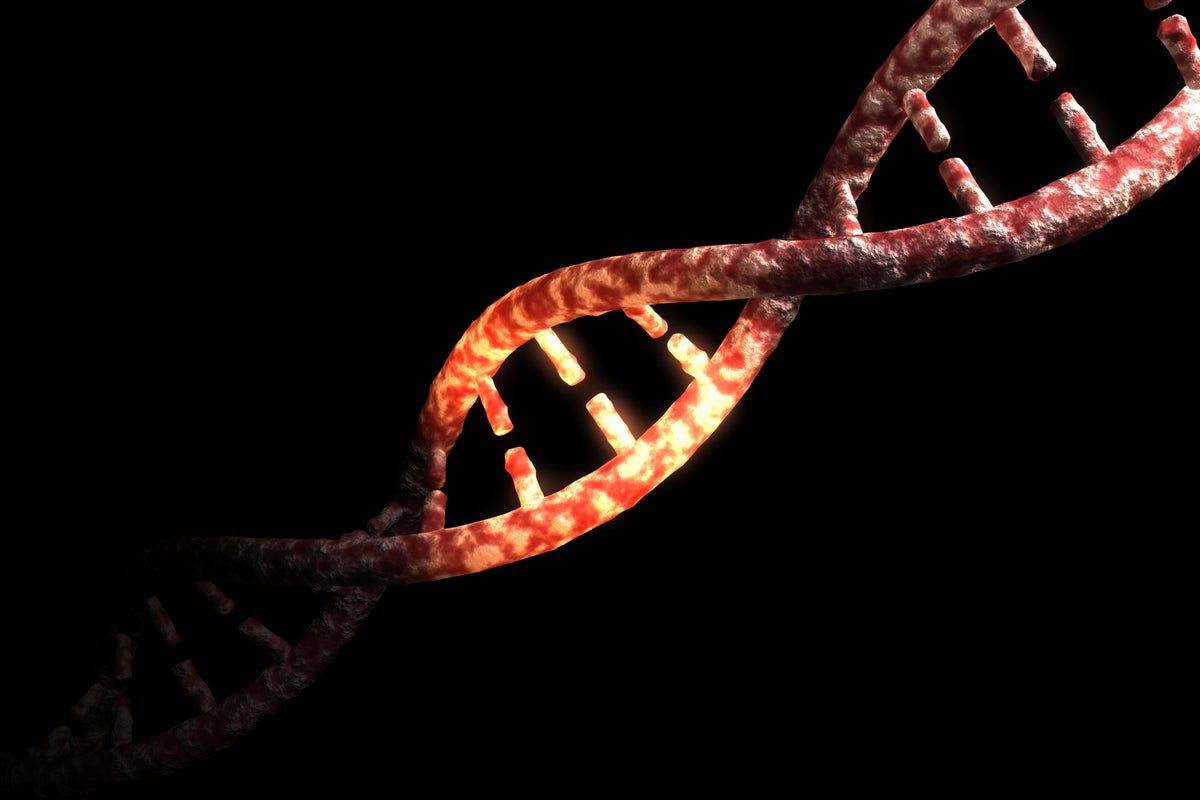
Scientists have analysed the genomes – the complete set of DNA – of 240 mammals with an aim to understand more about the origins of human diseases.
From dogs and bats to humans and monkeys, an international team of researchers surveyed the genetic material of different animals encompassing almost 80% of the mammalian species.
The team said its work, published in 11 different papers in the journal Science, pinpoints parts of the human genome that have remained unchanged for millions of years, providing information that may shed light on the origins of diseases, such as cancer, and mental health disorders, such as schizophrenia.
Patrick Sullivan, a professor at the Karolinska Institute in Stockholm, Sweden, who is an author of one of the papers, said: “This is a tool that can give us a lot of important hints about human disease.
“If we can take a deep dive into your genome, we can get some idea about your ancestors, both human and non-human, and observe the impacts of many millions of years of evolution in you.”
All living creatures have DNA – the blueprint of life that contains the instructions needed for an organism to grow, develop and reproduce.
While some sections of DNA – known as genes – have evolved over millions of years, others have remain unchanged and are referred to as “evolutionary conserved” genes.
The human genome contains around 20,000 genes that hold the code for making all the proteins in the body.
If we can take a deep dive into your genome, we can get some idea about your ancestors, both human and non-human, and observe the impacts of many millions of years of evolution in you— Prof Patrick Sullivan
It also has instructions that direct where, when and how much of the proteins are produced.
These parts of the genome, known as regulatory elements, are more difficult to identify than the parts that manufacture proteins.
So the researchers wanted to see if they could pinpoint these areas by analysing the genomes of mammals as part of the Zoonomia Project, the world’s largest comparative mammalian genomics resource.
This is because some human genes have similarities with animals: humans share 98.8% of genetic material with their closest relatives, chimpanzees.
By making detailed studies, the researchers were able to identify regions of the human genome with previously unknown functions.
They believe these regions are likely to be regulatory elements and play a key role in the functioning of the genome.
Mutations in these areas are thought to have a role in the origins of certain diseases or disorders.
Kerstin Lindblad-Toh, professor of comparative genomics at Uppsala University and one of the leaders of the consortium of researchers, said: “A large proportion of the mutations that lead to common diseases, like diabetes or obsessive-compulsive disorder, lie outside the genes and have to do with gene regulation.
“Our studies make it easier to identify the mutations that lead to disease and to understand what goes wrong.”
Jennifer Meadows, research scientist at Uppsala University and co-author of the article focusing on diseases, added: “Our analyses of 240 mammals give us a better insight into the regulatory signals in the genome.
“We calibrated our results on positions that are known to contribute to disease and then could use these to suggest additional positions which could be prioritised for neurological traits, such as schizophrenia or immune conditions including asthma or eczema.”
While there have been studies that have identified the genetic risk of certain diseases, the experts said this new research helps sheds light on how or why these genetic variations happen in the first place.
Prof Sullivan added: “This research project has really given me a much, much deeper understanding of the genome and how the genome is set up.
“I now use this all the time in trying to understand schizophrenia, suicide, depression and eating disorders.”
The scientists also studied the cancer medulloblastoma, the most common type of malignant brain tumour in children.
Karin Forsberg-Nilsson, professor of stem cell research at Uppsala University, who led the cancer part of the study, said: “In patients with medulloblastoma, we found many new mutations in evolutionarily conserved positions.
“We hope that analysis of these mutations will lay the ground for new diagnostics and therapies.”
The Zoonomia Project also revealed how DNA analysis can help predict which animals face the highest risk of extinction.
Scientists were also able to identify parts of the genome linked to certain traits in mammals, such as extraordinary brain size, superior sense of smell, and the ability to hibernate during the winter.







